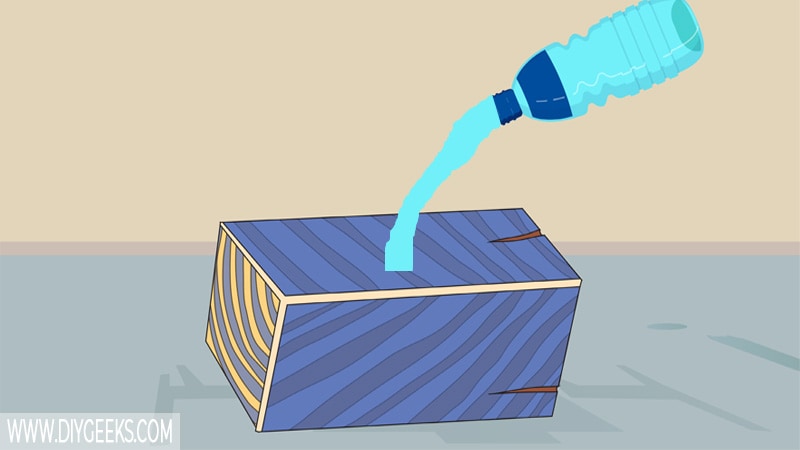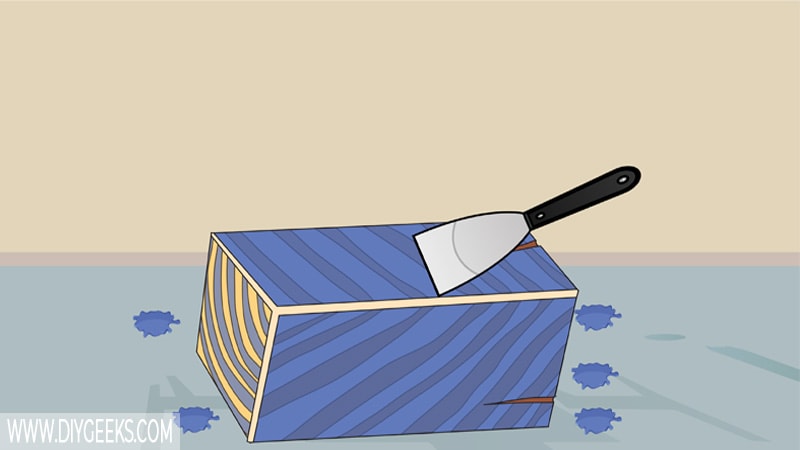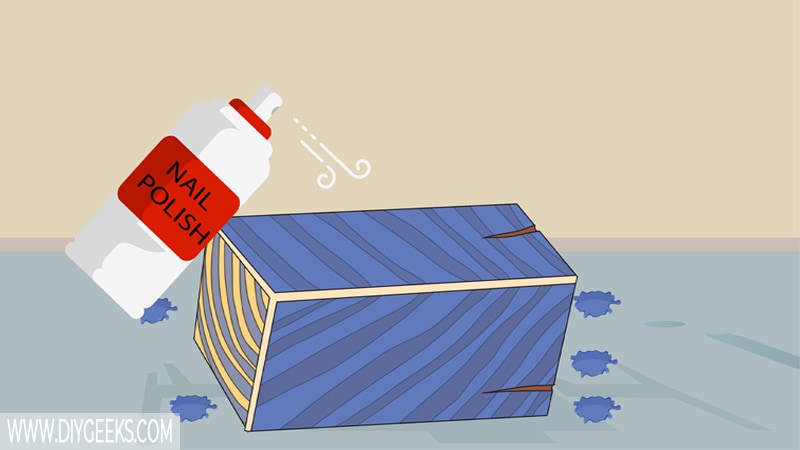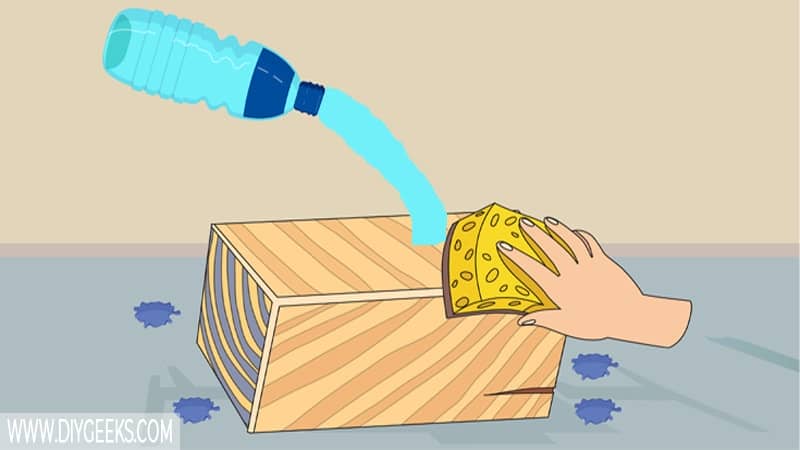Nail polish remover contains acetone which is an active ingredient to make paint thinner. So, can you remove paint with nail polish remover?
You can remove water-based and oil-based paint with nail polish remover (acetone) from different surfaces. The acetone will break the bond between the paint particles, dissolve the paint pigments, and liquefy the paint coating.
If the paint finish is sealed with a water-resistant sealer, acetone can’t remove it. You must remove the sealer topcoat first, then apply the acetone.
How To Use Remove Paint With Nail Polish Remover?
To remove paint with nail polish remover, do the following things.
- Clean the Paint Finish.
- Scrape the Paint Finish.
- Apply Nail Polish Remover.
- Clean the Surface.
The tools you need for this project are listed below.
- Acetone
- A Scrubbing Brush
- Rags
- Paint Scraper
- A Bucket Of Warm Water
- Detergent
- Rubbing Alcohol
1. Clean the Paint Finish

Clean the paint finish to remove dirt, dust, or debris that can prevent nail polish remover from penetrating the paint coating.
To clean the paint finish, use a clean dry rag.
2. Scrape the Paint Finish

Scrape paint from the surface with a paint scraper. Scraping will remove paint and create holes (pores) that acetone can penetrate and dissolve the paint easily.
To scrape paint, bend the paint scraper at a 45-degree angle and push it into the paint coating. Repeat this until you remove most of the loose paint.
If the paint coating is hard and you can’t push the scraper, apply nail polish remover (or acetone), wait a few minutes, and scrape it. Acetone will soften the paint coating, making scraping easier.
3. Apply Nail Polish Remover

Fill a bottle with nail polish remover (acetone) and spray it over the paint surface. For small paint finishes, damp a rag with acetone and use the dampened rag to wipe it.
After applying nail polish remover over the paint, wait 10 minutes or until the paint coating changes its form (liquefies), and wipe it off. For leftover paint stains, re-apply acetone and scrape them off.
Acetone will break the bond between paint particles, dissolve the paint pigment, and liquefy the paint.
Related Read: Does Goo Gone Remove Dried Paint?
4. Clean the Surface

After removing the paint coating, clean the surface to remove the acetone residue. The surface might discolor or get damaged if you don’t remove the acetone residue from it.
To remove acetone residue from the surface, do the following things.
- Clean the surface with a damp rag.
- Apply rubbing alcohol over the surface to neutralize the acetone.
- Wait around 3-5 minutes.
- Wash the surface with warm soapy water and a soft sponge. Ensure to remove all the acetone or rubbing alcohol residue.
- Allow the surface to completely dry.
Related Read: Will Mineral Spirits Remove Paint?
Which Types of Surfaces Can You Remove Paint With Acetone?
Wood
You can remove oil-based and water-based paint from wood with acetone. The acetone will dissolve and remove the paint as it’s a key ingredient for paint thinner.
However, don’t leave acetone for too long on porous surfaces as it can discolor, stain, and damage it. Porous surfaces have large pores and will absorb the acetone which can prevent paint from adhering.
Related Read: Can You Use Rubbing Alcohol To Remove Paint?
Car
You can remove paint from car surfaces with non-acetone nail polish remover. Non-acetone nail polish remover will remove small paint stains, but won’t affect the original car paint.
Don’t use acetone as it can damage the car’s frame, remove the original paint and expose the bare metal of the var, and cause stains and etching on the car frame.
Related Read: What Products Can You Use To Dissolve Latex Paint?
Clothes
You can remove paint from a few cloth types with nail polish remover (acetone). Acetone will dissolve the paint pigment from the fabric and remove the paint.
You can’t remove paint from wool, silk, dye, or printed clothes as the acetone will discolor and stain these types of fabric.
To remove paint from clothes with acetone, do the following things.
- Turn the clothes inside out.
- Test the acetone on a small part of the cloth to determine if it causes discoloration.
- Pour the acetone over the affected spot, and use a clean cloth to massage the acetone into the fabric.
- Wait a few minutes.
- Wash and rinse the cloth.
To strip paint from sensitive fabric, dilute the acetone with water first. Mix equal parts (ratio 1:1) of acetone and water in a container, and use the mixture on the fabric. If the color doesn’t come off, increase the amount of acetone in the mixture.
[su_youtube url=”https://www.youtube.com/watch?v=QfVZ8-zyvsw”]
Plastic
You can remove paint from plastic surfaces with acetone as plastic is non-porous and doesn’t get discolored or damaged by acetone.


